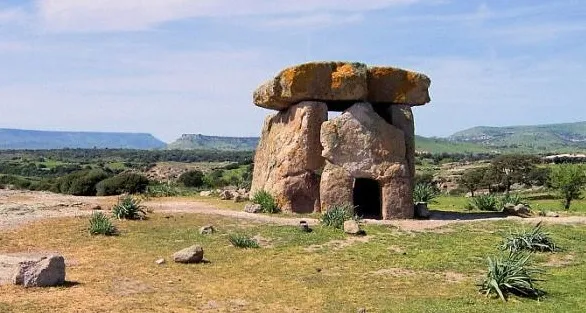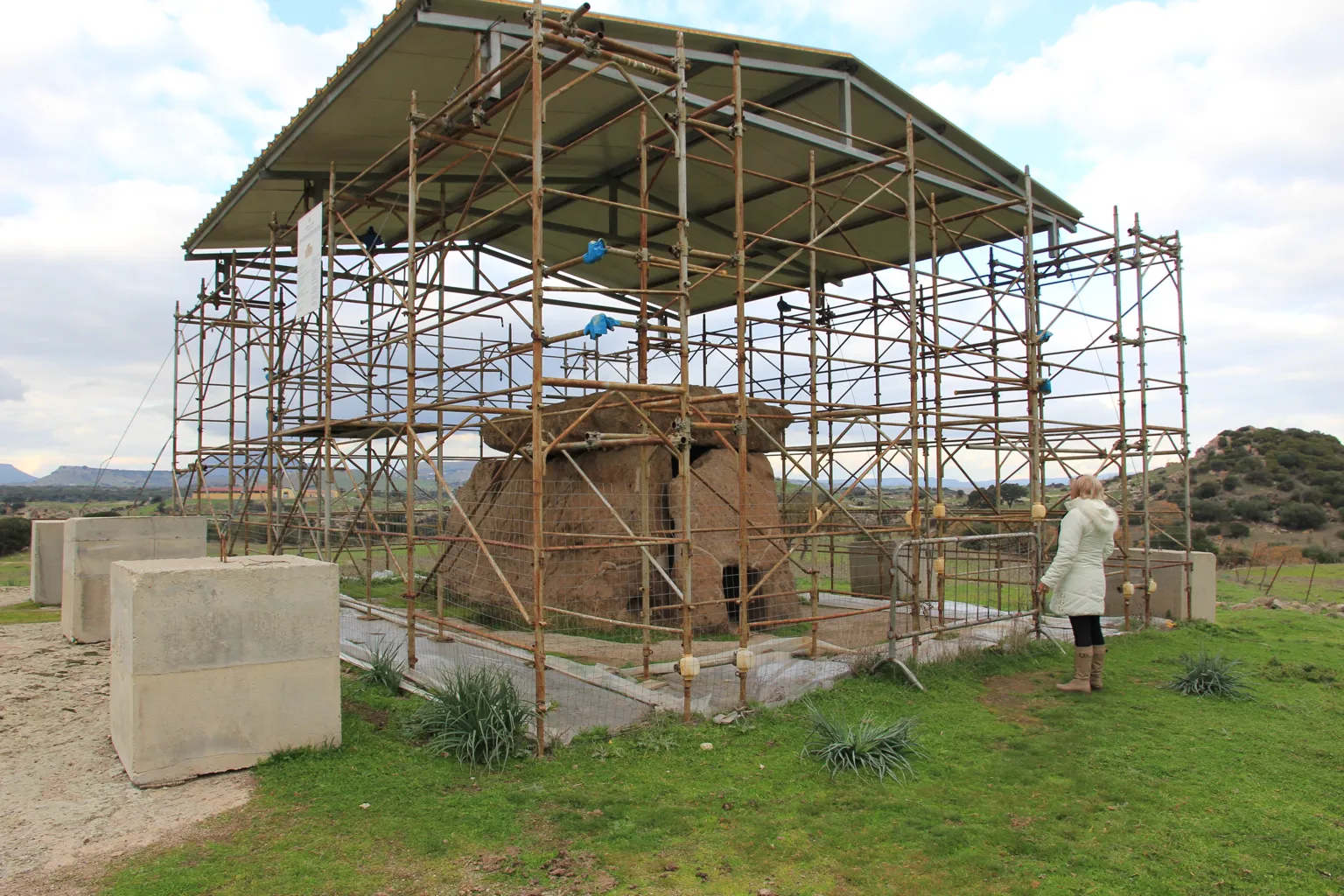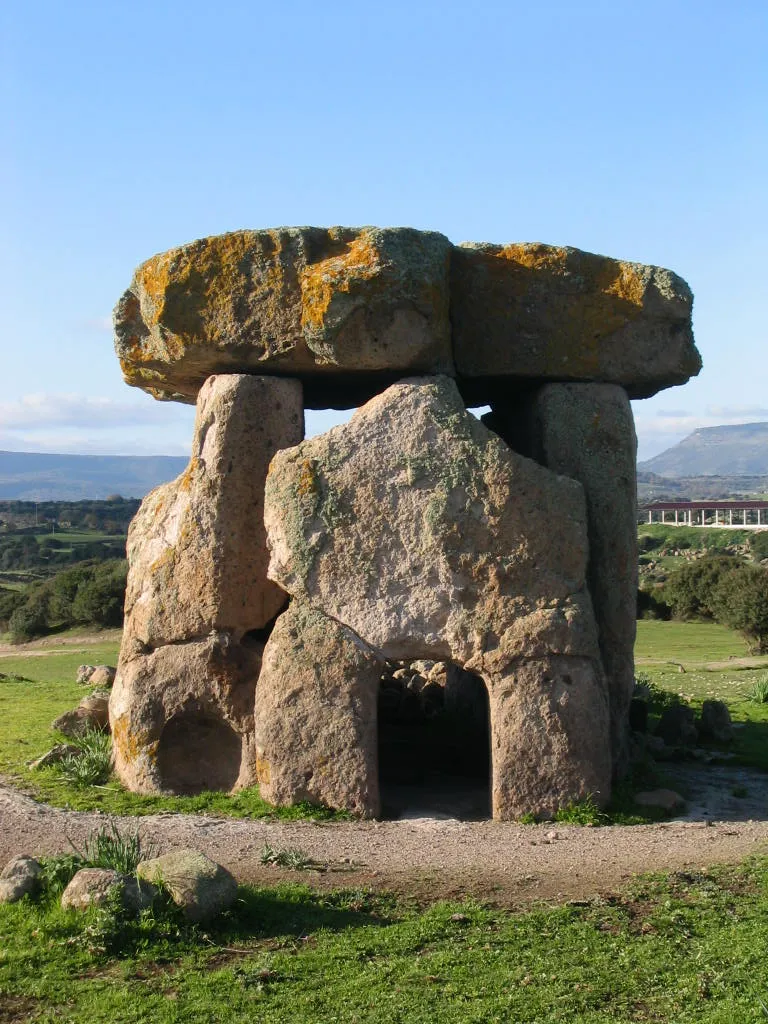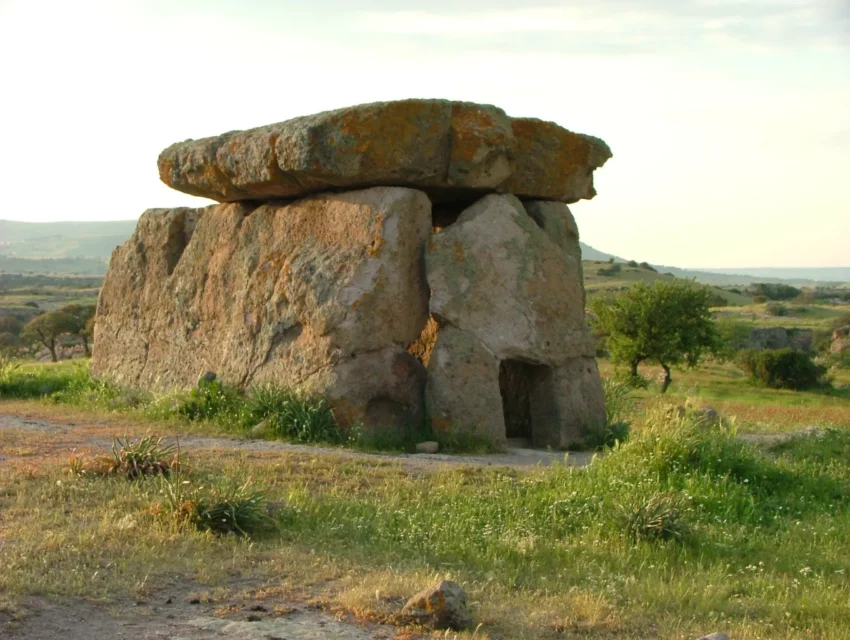Exploring the Dolmen Sa Coveccada: A Glimpse into Sardinian Prehistory
The Dolmen Sa Coveccada, also known as S’Accoveccada, stands tall on a plateau in Sardinia. This remarkable archaeological site offers a fascinating glimpse into the island’s prehistoric past.
Get your dose of History via Email
Architectural Brilliance
The dolmen has a rectangular layout, measuring 5 meters by 2.2 meters. Its construction involved three massive orthostatic slabs, meticulously placed in specially prepared channels in the rocky soil. These slabs, standing vertically, support a fourth slab on top. This capstone, originally weighing about 27 tons, now weighs 18 tons due to erosion and damage over the millennia. Unfortunately, the rear wall and part of the covering have been lost to time.

Access and Interior Design
A small opening, just 0.5 by 0.5 meters, in the front slab provided access to the dolmen. This narrow aperture was sufficient for introducing the deceased into the burial chamber. The internal room, measuring 4.18 by 1.14 meters, served as a collective tomb. Here, corpses were placed only after a process of fleshing, which was part of the burial ritual.
Special Features
Inside the chamber, to the left of the entrance, there is a niche carved into the wall. This niche likely held funerary equipment and offerings. Such thoughtful design elements highlight the cultural significance of burial practices in ancient Sardinia.
Intriguing Features
The dolmen includes a small “soul hole” in the front orthostat. This hole allowed access to the burial chamber, likely used to introduce the deceased. The chamber itself, measuring 4.18 by 1.14 meters, served as a collective tomb. A niche to the left of the entrance likely held offerings for the dead.
Nearby Menhir
Just 100 meters from the dolmen lies a broken menhir, originally 2.4 meters tall. This stone, crafted from the same local trachyte, adds to the site’s historical significance.

Restoration Efforts
In October 2010, significant restoration began to address the capstone’s split. The Italian Ministry of Cultural Heritage oversaw this delicate task. They enlisted a team of experts, including archaeologists, architects, and geologists, to restore the dolmen’s structural integrity.
Accessibility and Location
Despite its remote location, Sa Coveccada is accessible by car. From the village of Mores, drive east on the SS128bis. After 1.4 kilometers, turn south. Continue for 6 kilometers, then turn right at the sign for the site. Follow the sometimes-potholed road for 3 more kilometers to a farm entrance. From there, drive north past the farm to the car park. Walk the last 200 meters to the site.

Historical Significance
Dating back to the end of the third millennium BC, Sa Coveccada belongs to the Ozieri culture of the Recent Neolithic period. This era saw a shift from hypogeal tombs to subaerial constructions like dolmens. The site offers valuable insights into the evolution of burial practices in prehistoric Sardinia.
Conclusion
The Dolmen Sa Coveccada stands as a testament to the ingenuity and cultural practices of Sardinia’s ancient inhabitants. Its size and construction reflect the island’s significant role in prehistoric burial architecture. Whether you’re an archaeology enthusiast or a curious traveler, Sa Coveccada provides a fascinating journey into the past.
Sources:
Megalithic.co.uk
Wikipedia
Web.archive

